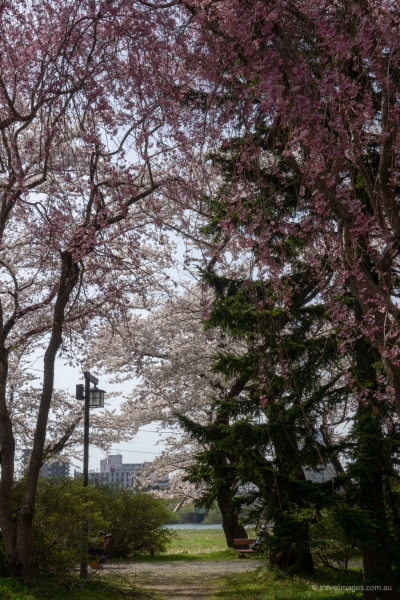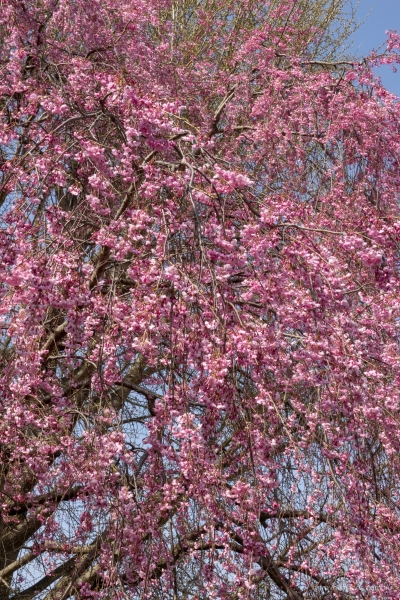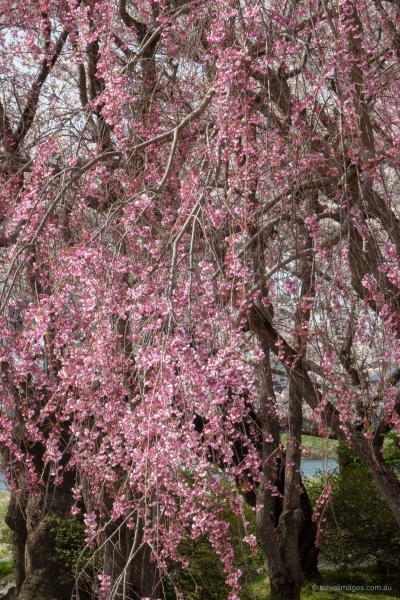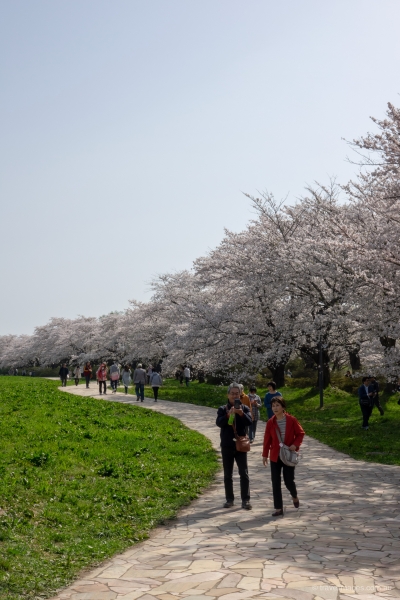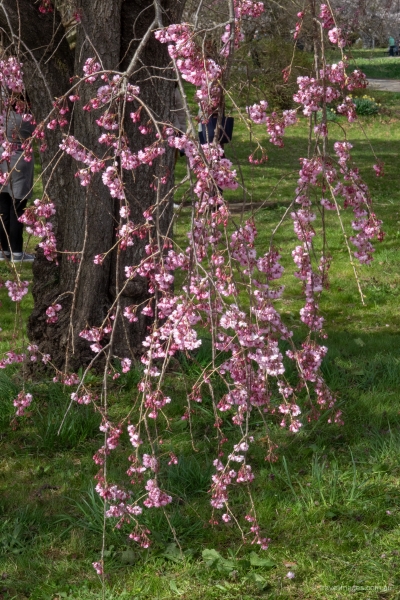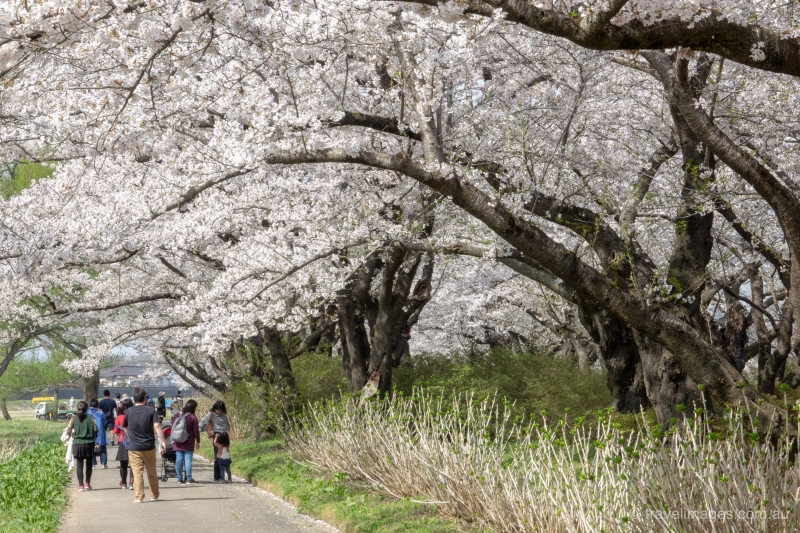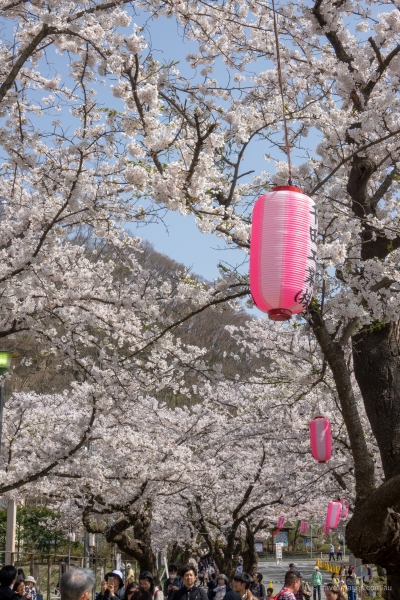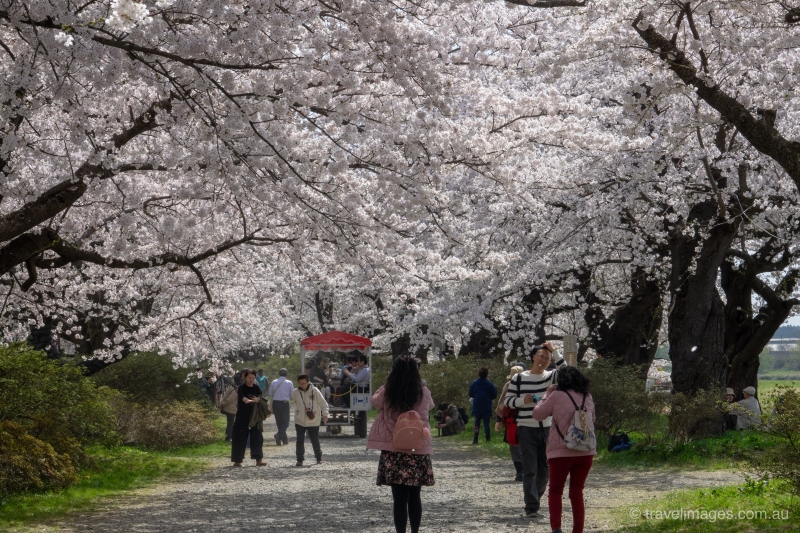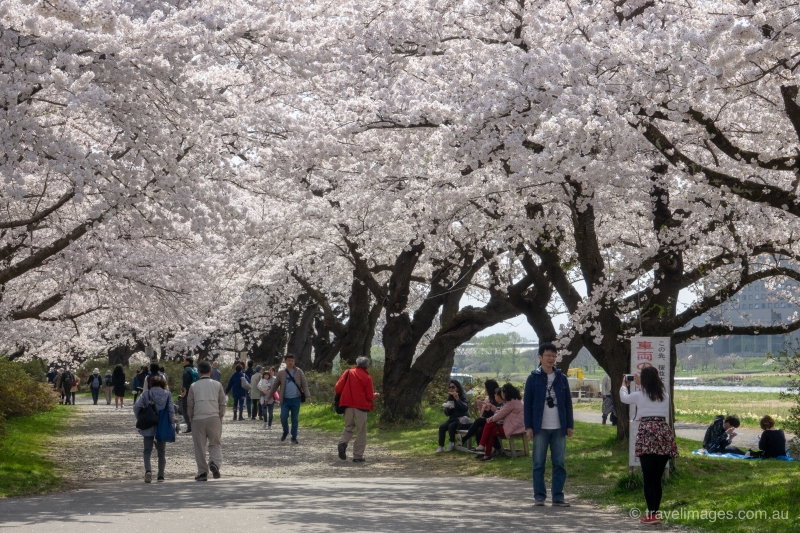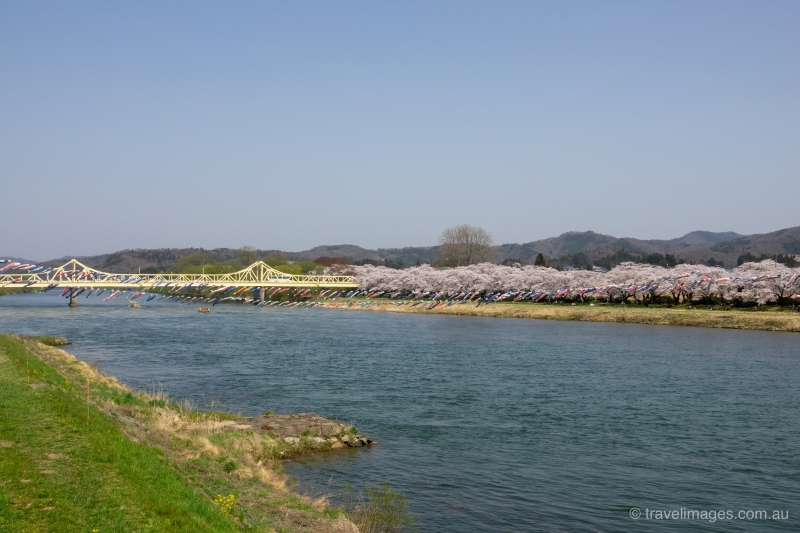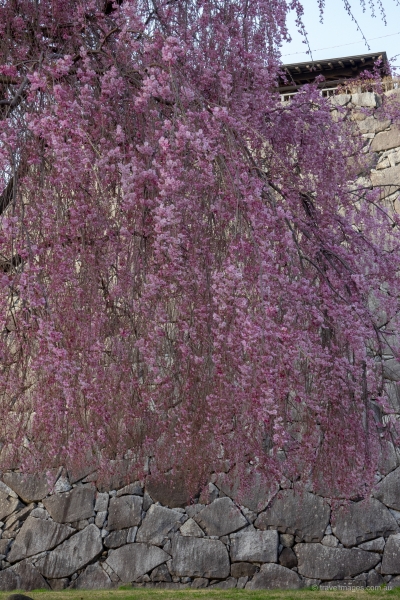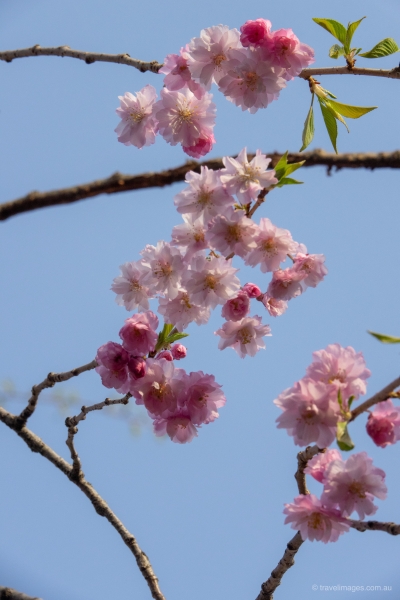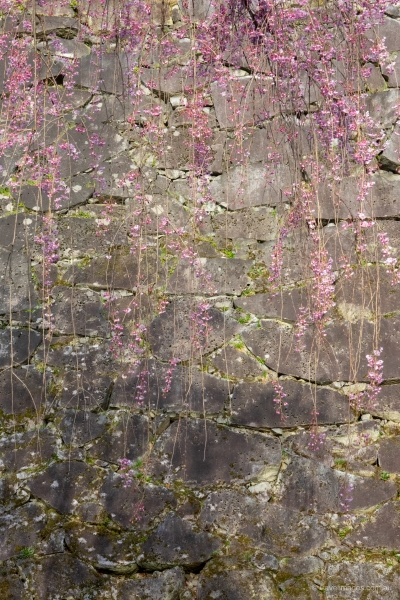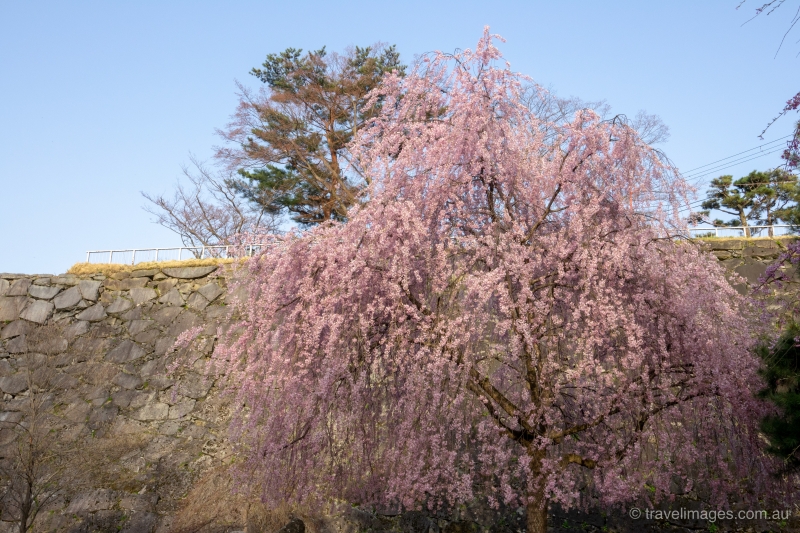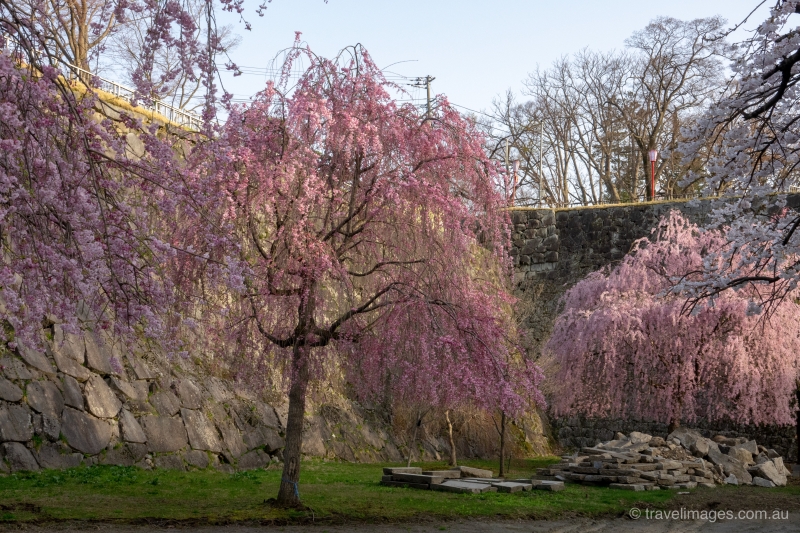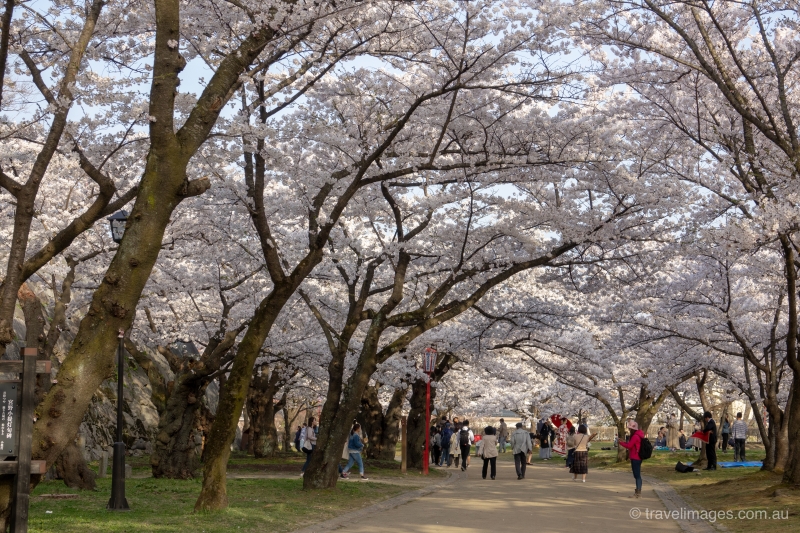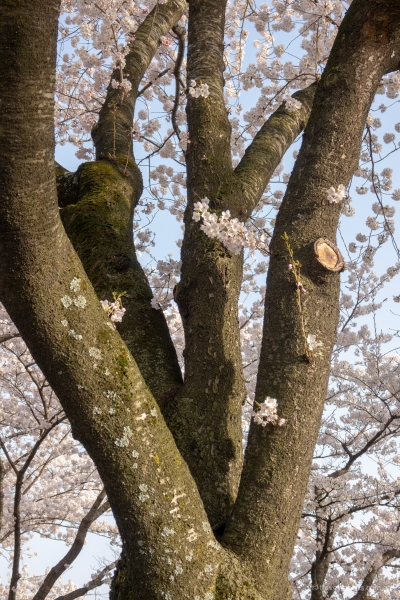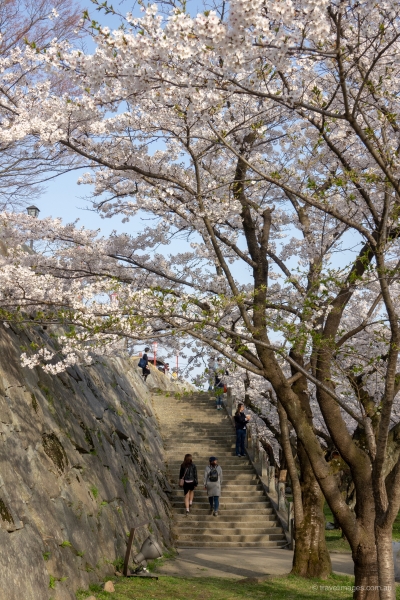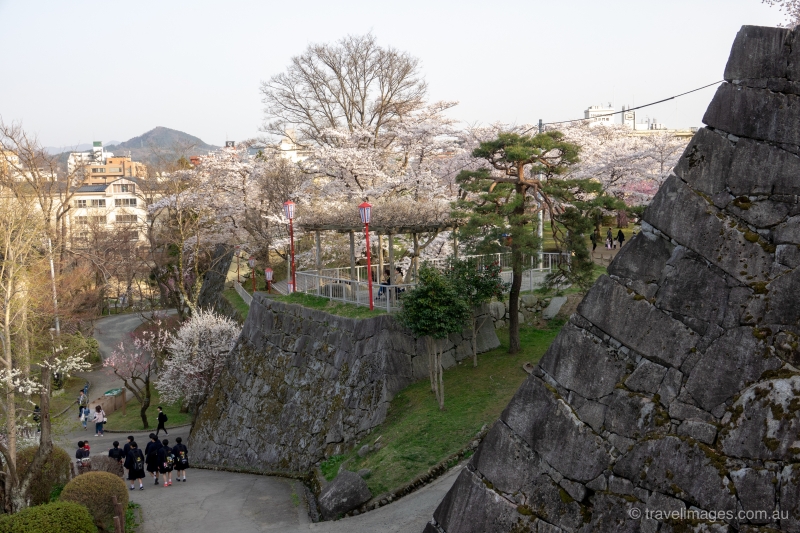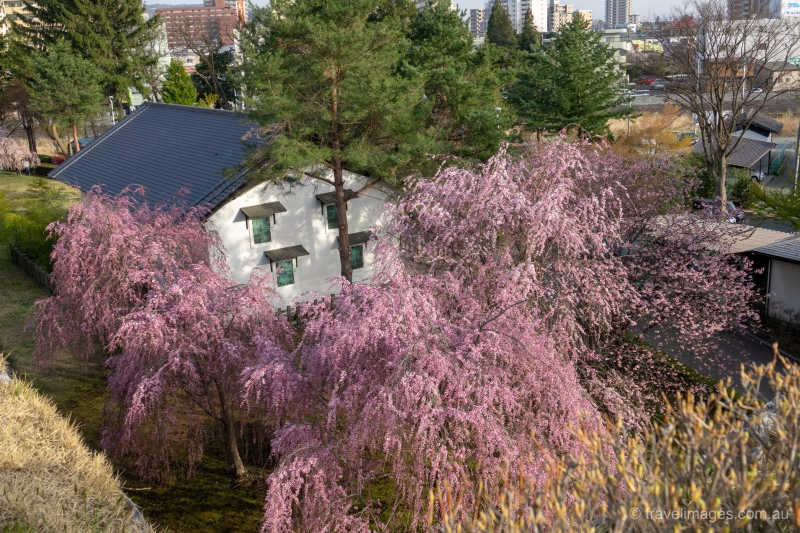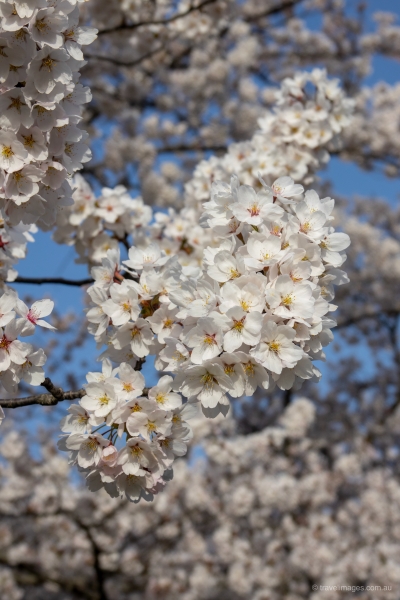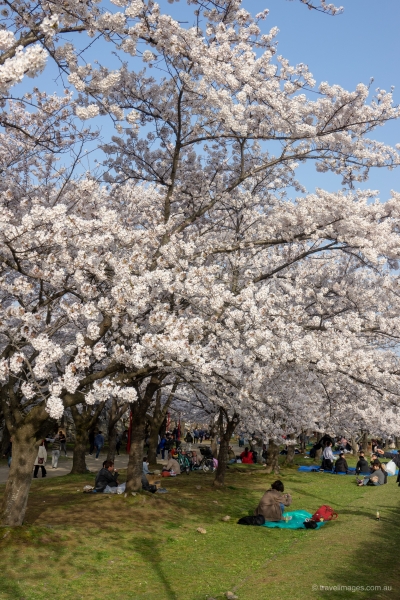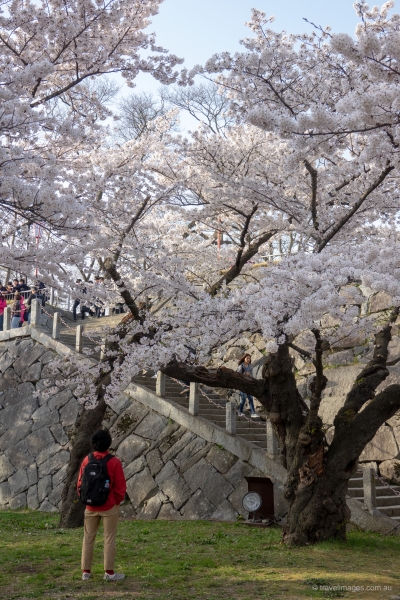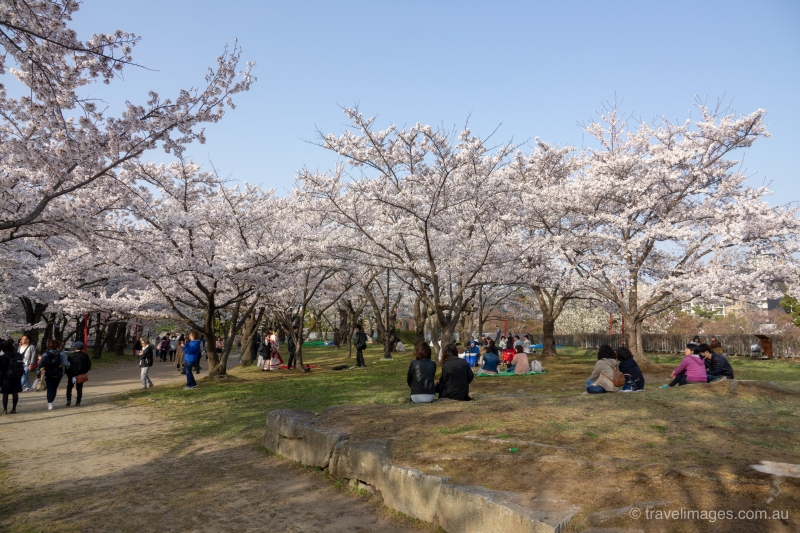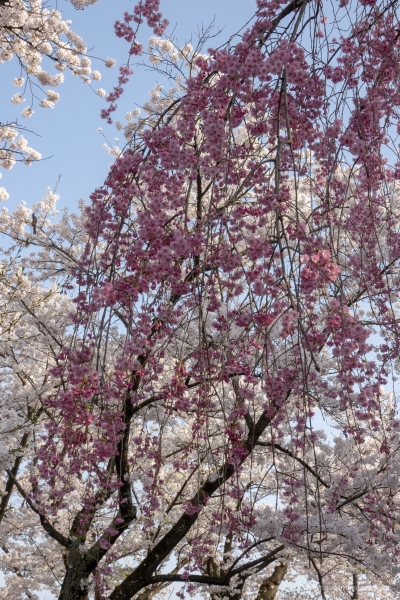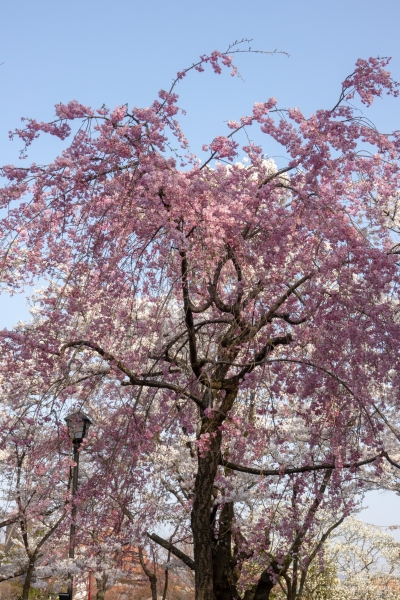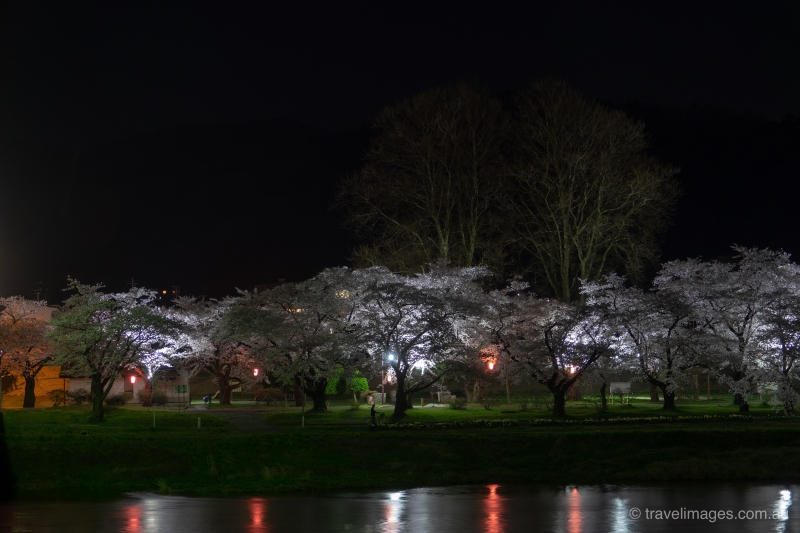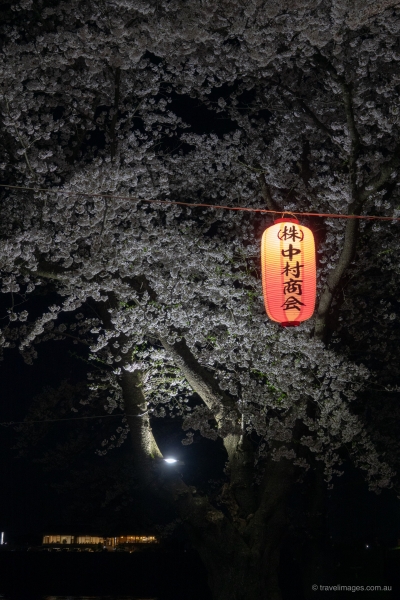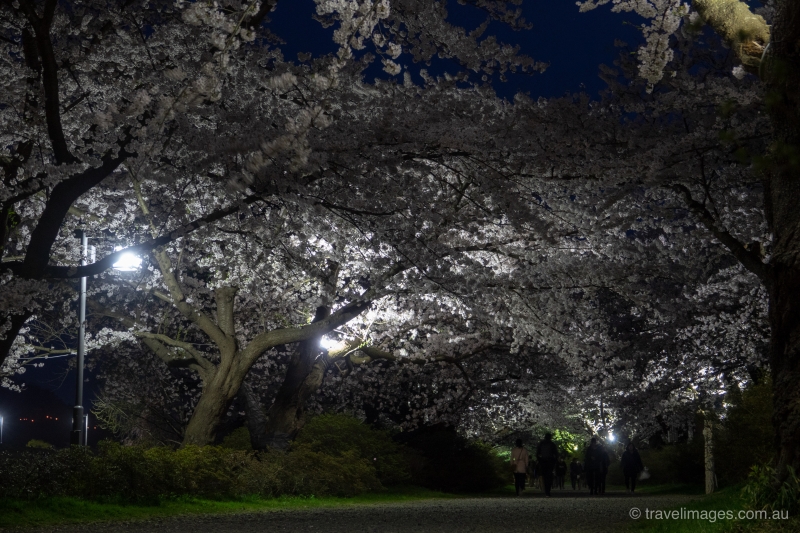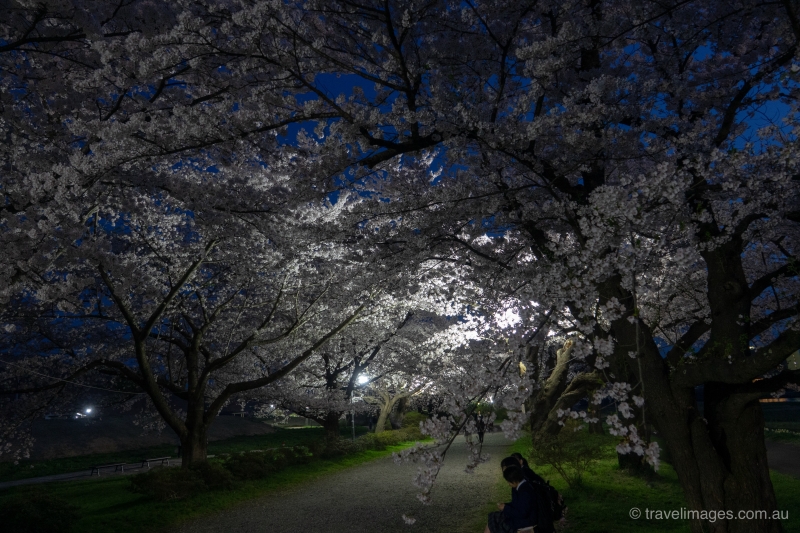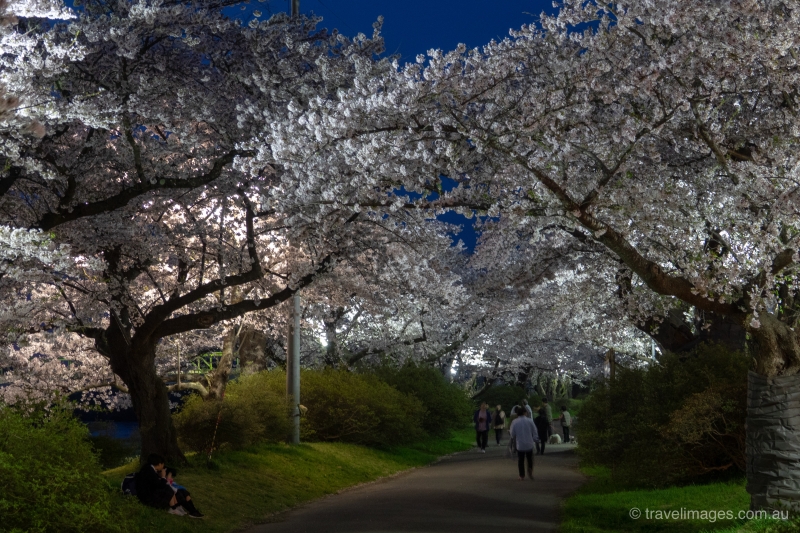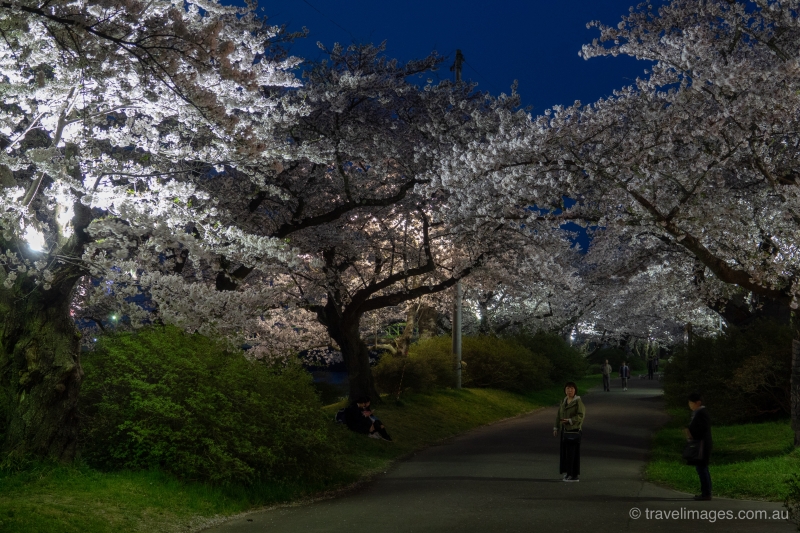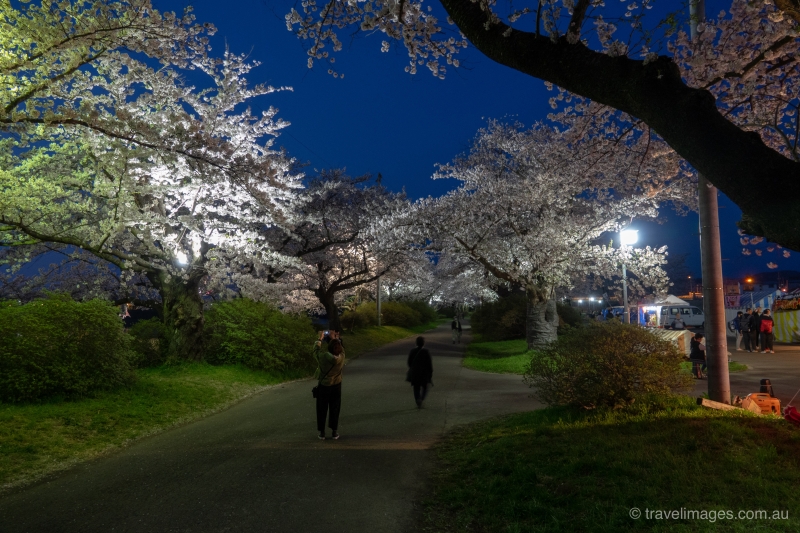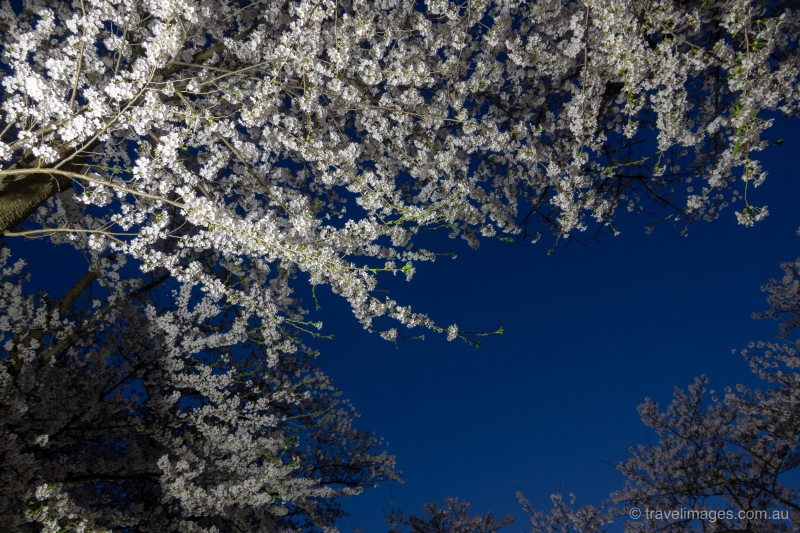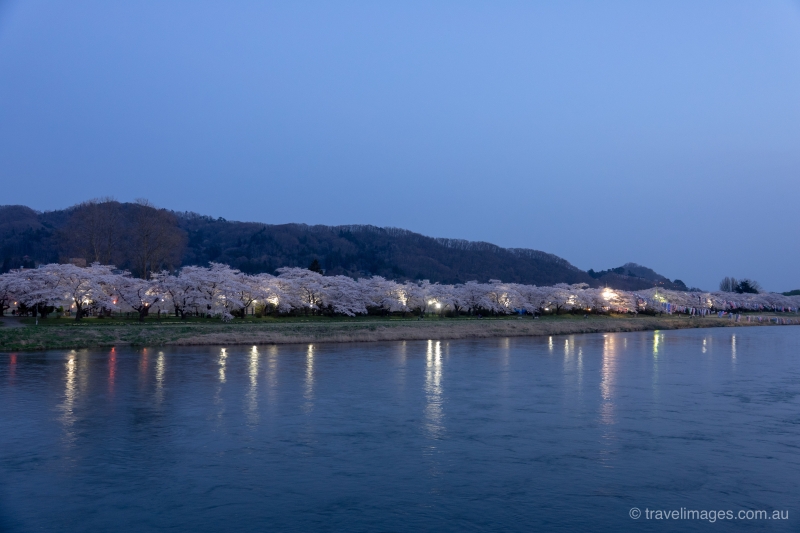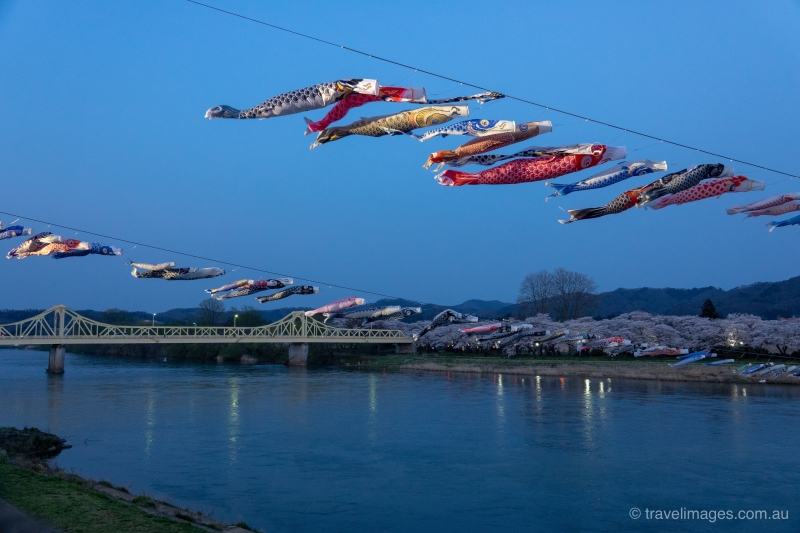Today is the last day of travelling to see cherry blossoms(sakura) or wisteria. It’s a day trip to Kitakami and Morioka, nearly 3 hours by Shinkansen from Tokyo. I discovered yesterday when I decided to take advantage of a quiet time at the JR ticket office that the train I wanted to take around 8.30am only had middle seats available (airline rules apply – avoid the middle seat), and the next train at 9:40am only had aisle or middle seats available. Aisle seat it is then.
I debated for a while whether to book a seat reservation to Kitakami (the stop before Morioka), or to Morioka . In the end I went for a reservation to and from Kitakami, as I might stay for the illumination of the cherry blossoms in the evening. This will also allow me to practice my new skills in what I’ll call Shinkansen hopping. For this trip I’ve been using the mobile app Hyperpedia, which is excellent, albeit with a few quirks when it comes to selecting stations from a search. Hyperpedia is the one that alerted me to the fact that with a Japan Rail Pass, I can jump on any Shinkansen heading to Tokyo from Shinagawa and grab an unreserved seat one stop. The Shinkansen station entry is the first one from my entry point into Shinagawa station, and the nearest exit to the hotel on the way home. The same applies to Tokyo Station to Shinagawa. I’m going to apply the same principle to the Kitakami to Morioka legs today. The only risk is that the unreserved cars are full (a risk in peak cherry blossom season), but it’s only 15 minutes or so between stations so I can always stand.
I have time for breakfast again at Dean & Deluca at Shinagawa station, and people watch through the windows. The conservative dress of Tokyo office workers is on full display. The men are invariable in dark blue or black suits, with black backpacks or briefcases. One non-ethnically Japanese man is bucking the trend walking along with no jacket and a lavender coloured shirt. Definitely not a local. The women are also in predominately navy blue skirt suits, or very occasionally in a navy blue or black pants suit. Low to mid heels or flat shoes are the vast majority, with only one woman in 20 minutes of watching walking past in high heels. The market for Burberry or it’s imitators in Japan must be huge. 95% of the women that are wearing coats are in trench coats of various lengths in camel or other shades of neutral, and I only see one or two women in coloured coats that aren’t trench coats. Bags are mostly black totes or backpacks, with very few women carrying bags that are not black. Overall, the office workers arriving at Shinagawa are neat, suited with little signs of individual flair, but the trench coats in particular appear to be high quality investment purchases rather than fashion pieces, similar to the bags, which carry quality high end labels such as Coach, which seems to be a favourite of working women in Japan.
Kitakami
Time to head to Tokyo station, and it’s as easy as showing the Japan Rail Pass at the manned ticket window at the Shinkansen barrier and jumping onto the next Shinkansen to Tokyo, which isn’t busy at this time of the morning. I’m at Tokyo station in plenty of time to catch my connection to Kitakami, which is quite full in the reserved seat cars. It 2 hours 50 minutes to Kitakami, and the train is busy most of the way. It’s noticeably cooler in Kitakami at 12:30pm, although sunny and a bit hazy.
The local schools appear to have done the English and Japanese language maps of how to get from Kitakami station to the Cherry Blossoms at Tenshochi Park. The “official” path is to turn left at the station exit and to follow the street to the next intersection. Rather than turn left, there is a short-cut to the river by proceeding straight ahead from the station, and some good views of the Sakura. There are also good views of the carp streamers that extend across the river. The cherry blossoms are planted in two lines along a pathway that starts on one side of the Sangobashi Bridge, and extend for a kilometre or so. It’s an easy 15 – 20 minute walk to the bridge, and then a 15-20 minute walk along the avenue. The local boat operators are doing a roaring trade, ferrying people across the river at various points. The service only operates 09:00 – 16:30, so not an option for the evening illuminations.

Kitakami seems to be popular with local tours (it’s too far for a day trip by bus from Tokyo), and a man with a Clydesdale-type horse is doing a roaring trade offering rides to tourists in his carriage under the trees. The blooms are at their peak, and won’t last terribly long with the strong winds whipping along the river. It’s already raining Sakura when the wind blows along the avenue. The flowers are a very light pink – from the air they appear pink, but up close they are a white petal with a yellow stamen. I also find some beautiful pink weeping cherries off the main path.
At the car park end of the avenue, there is a series of tents set up for local food vendors. It’s okonomiyaki Kitakami-style for lunch, and some kind of taro-based fritter. Time to wander back to the train station to spend a couple of hours in Morioka. The unreserved cars on the Shinkansen aren’t busy so easy enough to get a seat for the 20 minutes between Kitakami and Morioka.
Morioka Castle
The best place in Morioka to see Cherry Blossoms is a bus or taxi ride away, which I don’t have time for as I want to be back in Kitakami to photograph the night illuminations of the cherry blossoms, and to catch the 8:03pm Shinkansen back to Tokyo. Instead I opt for the ruins of Morioka castle, which is a 15 minute walk from the station. There are a surprising number of cherry blossom trees at the castle, which requires a steep climb up to the battlements on the train side of the station, or a slower, gentle climb followed by a steep section from the north side of the castle. It is a popular venue with picnickers in the late afternoon. The blossoms are the same white blossoms as seen in Kitakami, and the pink weeping cherry blossoms are to be found at ground level around the walls of the castle. Very much worth the quick trip from Kitakami.
There are a surprising number of English language signs in Morioka – there must be more tourism here than I imagined. Endoscopy Clinic anyone? How about a bus stop timetable in English? Car parks have their opening hours in English as well as Japanese. Even the signs at Morioka castle are in Japanese and English.
I take a different route back to Morioka station, which leads along the river and is popular with dog walkers and cyclists. The path leads behind a local school, where the girls are practicing their softball pitching and catching, and the sounds of the Beatle’s Yesterday played on an electric piano wafts from a music room. Quite surreal.
Dinner is soba and tempura ramen, ordered through a machine at Morioka station, paid for with my Pasmo card, and delivered in a hole in the wall ramen place geared to throughput. There are three men in suits standing at a counter eating ramen. The businessman that orders before me demolishes what looks like the same dish in less than 5 minutes and disappears. After 5 minutes I’m the only customer. My gaijin ramen eating skills generate so much concern to the cook that she brings me a glass of water and then a minute or two later a small soup ladle. Maybe I’m eating too slowly.
Cherry Blossoms by night in Kitakami
I’m back in Kitakami just before sunset, and walk back to the river. By the time I’ve reached the river and walked to the bridge, it’s getting dark, and it is much, much quieter here in the evening. There are still people about, with groups of school kids still in uniform at 7pm, but the absence of the tour buses makes it seem almost deserted. I haven’t brought my tripod with me, so all of the night photos of cherry blossoms are using improvised tripods such as signs, random fence posts, pretty much anything I could use to keep the camera steady enough for a long exposure. It’s also quite cool now, and I’m glad I persevered in carrying my thin parka.
The 8:03pm Shinkansen departs, shockingly, at 8:05pm from Kitakami, and is due to arrive in Tokyo at 22:56. That should have me back in Shinagawa by 11:30pm. It’s been a looong day with 6 hours on trains, but worth it. I think that’s it though for traveling to see wisteria and Sakura for this trip.
Today’s statistics: 29,107 steps and 20.79km, 118 floors and 242 minutes in the active zone.

